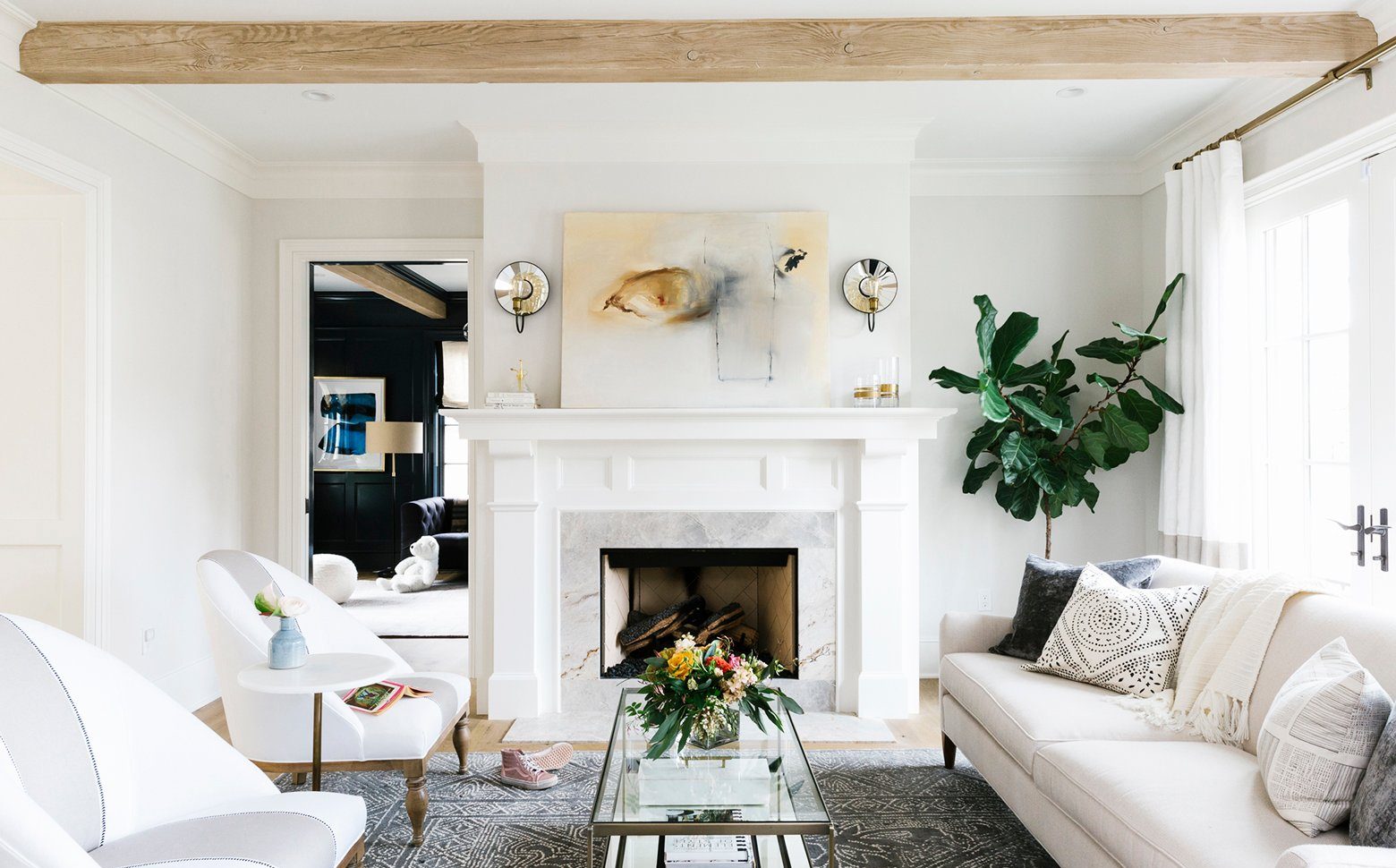You may have heard from Havenly designer Lauren Cox about the power of interior design, how to use color, and how to configure a balanced room. Another frequently overlooked, but incredibly important, design principal is scale and proportion. In this article, Lauren explains how scale and proportion create synergy and shares tips on how you can get started.
The idea of scale and proportion revolves around how items fit together in your space. Proportion refers to how well those pieces fit together. Scale refers to how well your pieces fit in your space.
While this is the most mathematical interior design principal, your eye can easily identify when something looks out of place. For example, you wouldn’t pair a small love-seat with a large, overstuffed lounge chair because it would appear disproportionate.
Rugs ground the space, so it’s important to choose the correct size. Your rug should be large enough that it goes under the front legs of your furniture. If your sofa measures 84”, you’ll need at least an 8’ x 10’ rug to do this.
Scale and proportion is also important when adding accessories and finishing touches. A general guideline is to keep items no taller or wider than one-third the length or the height of the piece it will sit on. Doing this results in really natural rhythm and flow.
When hanging artwork over furniture, over a bed in your bedroom or sofa in your living room, a general rule of thumb is to select artwork that’s half or two-thirds the width of the furniture below it. When organizing gallery walls, focus on how the artwork comes together as a unit.
Focus on Proportion Rather Than Size
People often choose pieces that are too big or too small for their space, particularly sofas. While you might be tempted to buy something that fits your whole family when they visit on Thanksgiving, remember Thanksgiving isn’t every day. So, a large sectional is unnecessary in a smaller space as you’ll end up feeling cramped. It’s better to prioritize everyday utility over one-off occasions.
Rule of Thirds
A lot of creative disciplines use the rule of thirds, and interior design is no exception. It’s a great tool to fall back on when grouping items because it generates a nice flow and cohesion. Stick with odd-numbered grouping such as three or five, and vary the height and size to create a tiered pattern.
Start with basic measurements. Figure out your square footage and ceiling height, to determine how much space you have for furniture and accessories. Observe how the space feels. For example, if you have large windows your space will automatically feel open. This architectural feature will allow you to include more furniture. Even in small spaces, tall ceilings will make your space appear more expansive.
When it comes to choosing furniture, make sure to factor in comfort and functionality. Think about your lifestyle and how you use the space. If your living room is reserved for Netflix binges, you don’t need a ton of furniture. On the other hand, if you host often, you’ll want to give your guests plenty of space to sit.
Because scale and proportion is mathematical and has a few more rules, we pulled together some great visuals and resources for you to download. Find them in Lauren’s free Skillshare class in the resources section.
Looking for a professional interior designers help? Get started with our fun style quiz.

